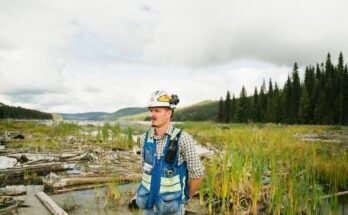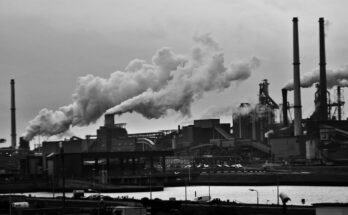Deforest owing is that worldwide clearing of forests to become one of the most crucial environmental concerns in this era. It affects the climate, biodiversity, and human life. Trees are a crucial element in establishing ecological balance, and so their destruction disturbs entire ecosystems, accelerates climate change, and endangers the very survival of millions of species, humans included. The article presents precisely why trees are so important to our Earth and how destructive deforestation can be.
Importance of Trees to Our Ecosystem:
1. Carbon Sequestration:
Trees trap carbon dioxide in the atmosphere; their carbon-dioxyene goes on to become its storaging. This process counteracts global warming by reducing the levels of greenhouse gases in the atmosphere. A single mature tree can absorb-as much as 48 pounds of carbon dioxide annually, making forests important in the fight against climate change.
2. Oxygen Production:
- Trees have often been called Earth’s lungs. Through photosynthesis, they release oxygen essential for sustaining life. The Amazon rainforest-generally referred to as the “lungs of the Earth”-has been believed to produce a fifth of oxygen contained within the Earth’s biosphere.
3. Habitat for biodiversity:
80 percent of terrestrial species live within forests. Everything from bugs to great mammals finds food, housing, and breeding space inside these ecosystems. The destruction of forests puts many species at risk from extinction.
4. Water cycle regulation:
Trees maintain soil moisture through the concentration of transpired water vapor into the atmosphere and manipulate local and global water cycles. Deforestation creates this shift, allowing for inconsistency in rainfall patterns and increased droughts.
5. Soil conservation
The roots of trees hold and stabilize soil against erosion. Through the organic matter of fallen leaves, forests provide nutrition to the soil; without the trees, the land becomes barren and eventually turns to desert.
Deforestation-Extent and Reasons
About ten million hectares of forests are lost worldwide each year. The major reasons for deforestation are:
- Agricultural development-removing trees to create farmland or pastureland.
- Logging-the process of cutting trees for various uses, especially for building construction, paper production, or making furniture.
- Urbanization-Creation of new towns which replace wooded areas.
- Mining-removal of many of the resources within the area creates open spaces that were once occupied by forests.
- Wild fires-Fires in general, while some are occurring naturally, more and more happen as a result of human activity.
Consequences of Deforestation
- Changes in climate
The felling of trees puts bound stored carbon dioxide back into the atmosphere and thereby accelerates global warming-about 10% of total greenhouse gas emissions come out as a consequence of deforestation. - Loss of biodiversity
The other, and even more serious, consideration is that from a nature point of view, this process takes away the habitat of countless species. A report by the IUCN states that deforestation has caused the extinction of thousands of species. - Soil degradation
Without trees to crown the soil, it can be eroded away and nutrient depleted during storms, rains, and winds. This poses serious threats for agriculture and food security. - Tensions in Indigenous Displacement
Many indigenous peoples hold the forests to be their homes, and they depend on these ecosystems for food and culture. Deforestation drives them away from their homes, hence threatening their way of life. - Weather and Climate Change
With changes in local and global weather patterns, deforestation is causing rising incidences of flooding and drought.
Coming Out of Deforestation
- Afforestation and Reforestation
Planting trees for the afforestation of degraded land allows carbon capture. Efforts such as the UN’s Decade on Ecosystem Restoration attempt to counteract deforestation’s upward swing. - Environmentally Conscious Practices
Promoting sustainable farming, logging, and mining can help reduce further forest degradation. Certification systems such as FSC provide responsible forestry practices. - Legislation and Regulation
Governments play an instrumental role in the establishment and enforcement of laws that protect forests. Protected areas designate national parks aimed at safeguarding ecosystems. - Activate the Community
The indigenous communities are often among the best managers of forests. When equipped with knowledge and requisite resources, they can become active agents in sustainable initiatives themselves. - Corporate Responsibility
Deforestation from supply chains can be reduced; companies can ensure their own supply chain is deforestation-free.
What You Can Do: Support Reforestation-To assist in tree planting and forest restoration.
- Reduce Your Use of Paper and Wood-Use recycled products and further reduce waste.
- Buy Environmentally Friendly Products-Look for FSC labels while purchasing wood products.
- Be an Advocate for Change: Raise people awareness on deforestation and pressure political representatives to take action.
- Adopt a Plant-Based Diet: If people consume less meat, this lowers the demand from an agricultural sector which brings about deforestation.
Conclusion
Deforestation is among the gravest threats to the Earth, though it is not irreparable, provided we undertake collective action. Trees are enormously significant, not only for ecosystems but also for human existence. When people value trees and strive for their conservation, they help build a future in which the next generations will thrive. Reforestation programs, eco-friendly practices, or even individual involvement in protecting the vital green of our mother Earth every contribution makes a difference.



